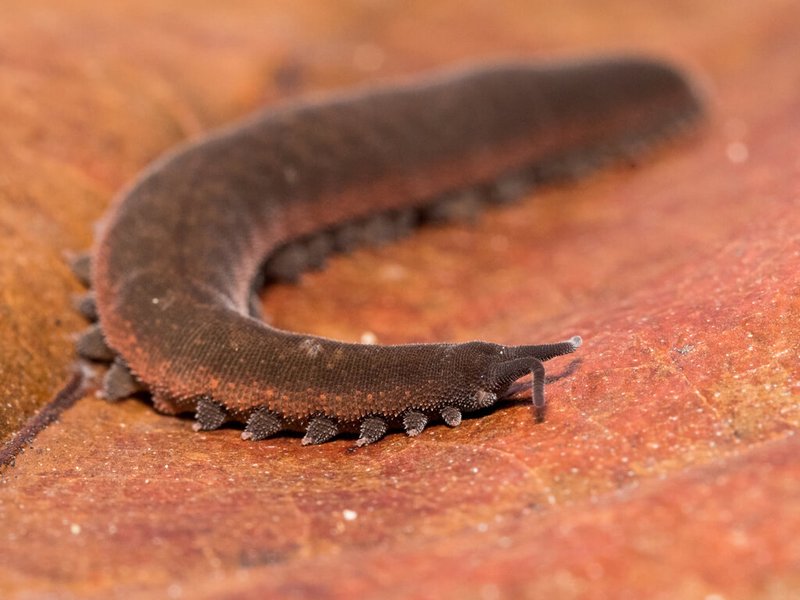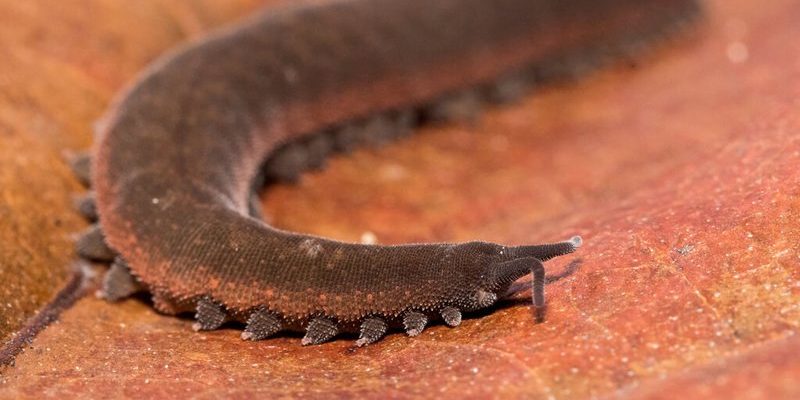
Velvet worms, or *Onychophora*, can be found in humid environments across the globe, from rainforests to leaf litter. They’re famous not just for their unusual appearance, but also for their incredible adaptability. With their soft bodies, squishy exteriors, and fascinating behaviors, identifying velvet worms can be quite the adventure. Let’s dive into the colorful world of velvet worms, exploring their vibrant hues, unique patterns, and varying sizes.
What Are Velvet Worms?
Let’s start at the beginning: what exactly are velvet worms? They belong to an ancient group of animals that have been around for over 500 million years. Imagine a creature that has survived the test of time, adapting and thriving through countless environmental changes. Velvet worms are segmented, much like earthworms, and can range in size from just a few inches to about 8 inches long. They have soft bodies covered in a velvety texture, hence their name.
These worms are more than just a quirky addition to nature; they play an essential role in their ecosystems. They primarily live in humid environments and are often found in leaf litter or under logs, where they hunt for small insects and other prey. Their unique method of hunting involves shooting a glue-like substance from slime glands to capture their food. Pretty cool, right?
Colors of Velvet Worms
One of the most striking features of velvet worms is their color. You might be wondering, “Do they come in all the colors of the rainbow?” Well, not exactly, but they do have a range of vibrant hues. Common colors include shades of brown, green, blue, and even pink! The colors often help them blend into their environments, providing camouflage from predators.
The coloration can also change based on the specific species. For example, some species found in tropical rainforests may be brightly colored to warn potential predators that they’re not tasty. Think of it as nature’s version of wearing a “Do Not Eat” sign. Colors can also help researchers identify different species or subspecies, which is vital for conservation efforts.
Patterns on Velvet Worms
When you look closely at velvet worms, you’ll notice they often have distinct patterns on their bodies. These patterns can range from spots and stripes to more intricate designs that are unique to specific species. Honestly, some of these patterns could rival any artist’s canvas!
Each pattern serves a purpose. For instance, some species have stripes that help them blend into their surroundings, making them look like just another piece of bark or leaf. Others may have spots that serve as a warning to predators. The patterns can tell researchers a lot about the creature’s environment, behavior, and even its evolutionary history. So, the next time you see a velvet worm, take a moment to admire not just its color, but those unique patterns too!
Size Differences in Velvet Worms
Velvet worms come in various sizes, usually ranging from 1 to 8 inches long. The size can differ significantly depending on the species, habitat, and age of the worm. Smaller species are often found in more humid environments, while the larger ones can roam through larger forested areas.
You might find yourself asking, “Does size really matter?” Yes, it can! Larger velvet worms may have different hunting strategies compared to their smaller counterparts. For example, bigger velvet worms can capture larger prey, while smaller ones are more agile and can navigate tight spaces. If you ever spot one, make sure to note its size, as it’s a crucial part of identifying the species!
Where to Find Velvet Worms
Now that we’ve gone over colors, patterns, and sizes, let’s talk about where you might find these unusual creatures. Velvet worms prefer humid and moist environments, making rainforests their favorite hangouts. They often hide under logs, leaves, or in burrows that they create in the soft, moist ground.
You might spot them in their natural habitats at dusk or dawn when they’re most active. If you’re wandering through a rainforest or even your backyard on a damp day, keep your eyes peeled! Just remember to look closely; their colors and patterns can make them blend right into their surroundings.
The Importance of Identifying Velvet Worms
Understanding how to identify velvet worms is essential for several reasons. From a scientific perspective, recognizing different species can help researchers track biodiversity and understand ecosystem health. Velvet worms are often considered indicators of environmental change, so knowing their presence (or absence) can give important clues about the state of their habitats.
Additionally, increasing public awareness about these fascinating creatures can help protect them. Many species face threats from habitat destruction and climate change. By learning about velvet worms and spreading that knowledge, we can contribute to conservation efforts and help ensure these incredible organisms continue to thrive.
Velvet worms are a captivating blend of color, pattern, and size that tell the story of evolution on our planet. By understanding their unique characteristics, you’ll not only appreciate their beauty but also the critical roles they play in their ecosystems.
So, the next time you find yourself in a humid environment, look a little closer at the ground beneath you. Those little, squishy creatures could be velvet worms—living pieces of history that remind us of the wonders of nature. Embrace the excitement of discovering these unique beings and share your knowledge with others. After all, the more we know about our natural world, the better we can protect it!

